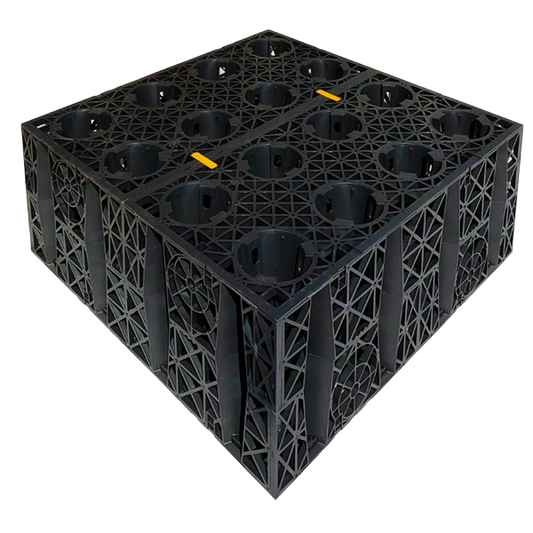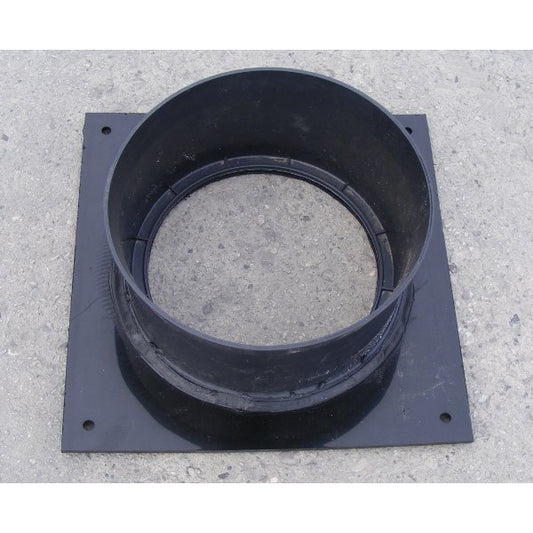-
Soakaway Crates: Hydrocell 62 tonne soakaway crate - 1m x 0.5m x 0.4m (190 litres/0.2m3 per crate)
 View DetailsSoakaway Crates: Hydrocell 62 tonne soakaway crate - 1m x 0.5m x 0.4m (190 litres/0.2m3 per crate)
View DetailsSoakaway Crates: Hydrocell 62 tonne soakaway crate - 1m x 0.5m x 0.4m (190 litres/0.2m3 per crate)- Regular price
- £31.92 (£26.60 ex VAT)
- Regular price
-
£37.00 - Sale price
- £31.92 (£26.60 ex VAT)
- Unit price
- per
-
Soakaway Crates: Polystorm 61 tonne Polypipe Soakaway Crate - 1m x 0.5m x 0.4m (190 litres/0.2m3 per crate)
 View DetailsSoakaway Crates: Polystorm 61 tonne Polypipe Soakaway Crate - 1m x 0.5m x 0.4m (190 litres/0.2m3 per crate)Est. delivery: 1-2 working days
View DetailsSoakaway Crates: Polystorm 61 tonne Polypipe Soakaway Crate - 1m x 0.5m x 0.4m (190 litres/0.2m3 per crate)Est. delivery: 1-2 working days- Regular price
- £33.06 (£27.55 ex VAT)
- Regular price
-
£40.42 - Sale price
- £33.06 (£27.55 ex VAT)
- Unit price
- per
Frequently Asked Questions
Do I need a soakaway?
The simple answer is: it depends.
In most cases, rainwater will seep into the drain or through the soil, and the excess water will be directed away from your property (and others) via guttering and drainpipes.
However, in certain ground conditions and areas where there is a lack of drainage, a soakaway will help the water disperse into the ground evenly and quickly.
UK Building Regulations require you to dispose of stormwater from your building effectively. For a soakaway crate to be installed successfully, the following criteria must be met:
- The soil around the building is adequate for infiltration
- The site is not on filled ground
- The site doesn’t slope towards the building
- The water table isn’t too high
To find out whether you need a soakaway, get in touch with our experts here at Cotterill Civils.
How do soakaway crates work?
Traditionally, a soakaway was a large hole in the ground, lined with rubble, which encouraged rainwater to quickly flow through the soil.
These pits were designed to store rainwater run-off, allowing infiltration into the soil. However, soil and debris would often gather and fill up the empty space – meaning there was nowhere for the water to run into.
Here at Cotterill Civils, we provide a comprehensive range of soakaway crates, which are perfect for attenuation and ground infiltration, and act as an underground reservoir.
These large plastic structures can be clipped together to form a box structure, helping to control the rate at which water filters through the soakaway.
How deep should a soakaway be?
Calculating the depth of a soakaway can be tricky, but the team at Cotterill Civils is always on hand to guide and advise you.
As a general rule of thumb, it’s 1 cubic metre of a soakaway for every 30sqm of the roof – but the depth of the hole can vary, depending on the location.
For instance, soakaways under a driveway need to be deeper than those under a garden or patio to allow for more top fill.
Although soakaways are easy enough to install yourself, there are lots of regulations to follow to eliminate damp issues or improper drainage.
That’s why we’d always recommend asking your groundworker to conduct a soil percolation test before you start to excavate.
If you have any questions or queries regarding the depth of a soakaway, don’t hesitate to contact our friendly experts.
How much do soakaway crates cost?
The price you’ll pay for soakaway crates can vary depending on numerous factors – including the size of the crate, how complex the installation process is, and whether you need additional extras (i.e. damp proof membrane, double-sided tape, top hat connectors, etc.).
Some gardens require smaller soakaways that are usually straightforward to install. Others are more complicated and require more materials and labour, which adds to the overall cost.
The good news is, we provide soakaway crates in a range of sizes to suit various applications. These are manufactured from top-quality materials and are available for a highly competitive price.
We also offer an installation service for soakaway crates – ideal if you’re looking for a cost-effective solution for surface water issues.

















